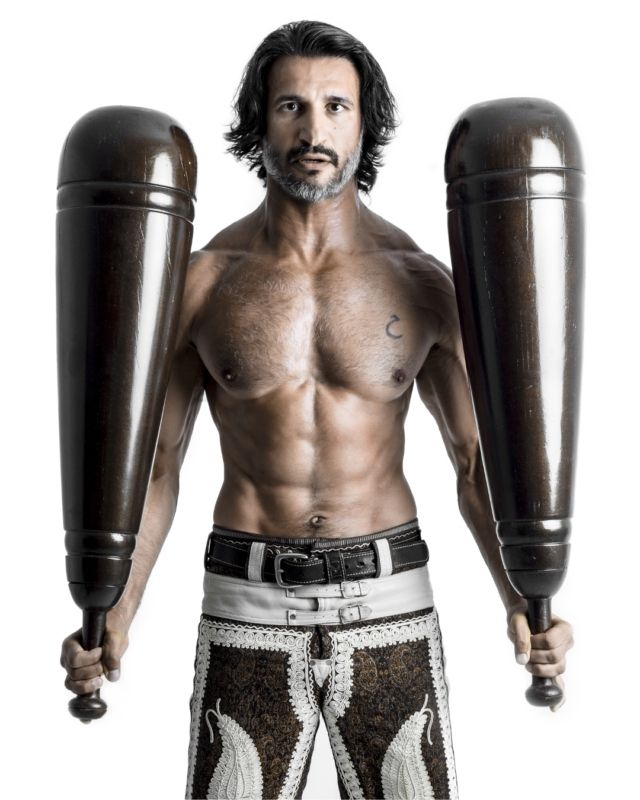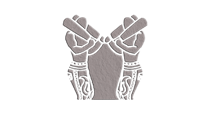Pahlavāni Variations

The Persian Yoga™ Pahlavāni Variations is the continuation to the Fundamentals course with 20 new Shena and 20 new Meel exercises and variations. It also includes progressions as well as an introduction to and fundamentals of Sang (Shields). There’s also new dynamic stretching and footwork sequences as used in the Iranian Zurkhaneh (house of strength) during Pahlavani training ceremonies.
Pahlavāni Variations (Persian Yoga Volume 2) contains 70 new exercises and techniques additional to those presented in the Fundamentals (Volume 1) series.
Pahlavāni is the world’s oldest martial arts conditioning system developed by Persians over 2,500 years ago. This online course is an amalgamation of the Variations manual and instructional videos and will teach you the principals and fundamental Pahlāvani (Persian Yoga) exercises and variations together with complete regressions and progressions.
In Persian and in the Zurkhaneh (House of strength) these variations are referred to as Shireen-kaari which literally translates to ‘making it sweet’. The purpose of the Variations is to progress both strength and skill of the practitioner as well as breath new life into the practice of Persian Yoga™.
This online course clearly and concisely explains and demonstrates all the fundamental exercises, variations and techniques of Pahlavāni (Persian Yoga™) as a system of conditioning and physical art-form. It also includes a complete routine and a progression chart and program so that the student may learn and practice these ancient arts at home.
Copyright
A great deal of work and effort has gone into gathering and compiling the information presented on these pages. The information stems from the rich cultural traditions of the Persians yet belongs to the heritage of mankind. This content is my original work and I hope you will find it interesting, engaging and valuable.
This content presented here or any portion thereof may not be reproduced or distributed in any manner whatsoever without the express written permission of the publisher except for the use of brief quotations in a review.
Thank you for the courtesy of respecting my work.
Persian Yoga™, Shena™, Meel™ & Sang™ are trademarks of Persian Yoga Pty Ltd.
Dr Kashi Azad DC
Founder
Persian Yoga Pty Ltd
www.persianyoga.com
© since 2015 Persian Yoga Pty Ltd – All Rights Reserved.
Dedication
To the memory of my father Heidar (the lion). I miss you and I love you.
Foreword
As a student of Persian Yoga over the past 5 years I have always found Kashi’s teaching material to be of great benefit to my personal practice and instruction of others.
The Persian Yoga Variations manual has provided a logical and concise platform in undertaking more complex variations from the fundamentals introduced in Persian Yoga Fundamentals manual.
Kashi explains variations succinctly allowing for faster competency of smooth biomechanically safer circular strength movement. Kashi’s understanding of ancient practice is interwoven with his modern understanding of human biomechanics.
As a qualified chiropractor, health and physical education teacher/athletic director, Varsity/Junior Varsity coach and personal trainer, I have a deep understanding of why Persian Yoga is beneficial to our health as a human being.
The order in which Persian Yoga is authentically practised resembles neurological human development. This form of movement engages our neurology by accessing our sensorimotor, vestibular and cerebellar pathways through use of Sang, Meel, Shena and callisthenics in circular patterns priming balance and posture.
No other form of systematic conditioning displays such a thoughtful order and progression, thereby safely preparing the average participant to high level athletes.
Persian Yoga continues to challenge me physically, mentally and spiritually by means of circular strength and wisdom, “What you are seeking is seeking you” (Rumi, 13th Century).
Be Tireless.
Dr. David Oxenham, DC
2017/12/23 Brisbane, Australia.
Preface
The Father of Modern Medicine, Pour Sina (Avicenna), states in the Canon of Medicine that the body has an innate moisture and heat that confers life on the body and the spirit, or creative force, of a person that activates the nervous system.
The quality, amount and the circulation of this innate fire and water, as well as the activity of the nervous system, directs the crucial processes of generation or coming to be, of development and growth, and of the maintenance and sustenance of the mature body.
These three processes operate through a range of activities or faculties: generation from sexual intercourse, growth from nutrition and bodily maintenance from a combination of nutrition and evacuation, activity (movement) and rest (stillness), and the environment in which the organism lives.
Today it is well understood that the adult human body is, on average, made up of ~65% water. And also that heat is produced by all the various reactions that occur in the body.
It is also becoming clearer that the human body literally glows, emitting a visible light in extremely small quantities at levels that rise and fall with the day. These findings suggest these light emission are linked to our body clocks. Most likely due to how our metabolic rhythms, and the balance between our innate fire and water, fluctuate over the course of the day in response to our movement or lack thereof.
Furthermore it has been demonstrated that the motor cortex and spinal cord possess the remarkable ability to alter structure and function in response to movement. And that the cerebellum, the region of the brain that is crucial for motor control and contains more than half the neurons in the Central Nervous System, in addition to contributing to coordination, precision, and accurate timing of movement also contributes to cognitive processing and emotional control.
The implications of these findings are enormous and beyond the scope of this work.
Suffice to say that the need for and role of movement is clearly understood in today’s world. The question is what method, type, or sequences of movements generate optimal homoeostasis, the right balance of the humors, and the efficient uninterrupted and unhindered circulation and flow in the vascular and nervous systems to ensure the vitality ideal for every season in the span of a man’s life?
If we are seeking to ensure a healthy development, an adequate length of life, to continuously foster and develop strength, and to maintain vitality into a healthy old age so to speak, then it is necessary that the methods employed are natural, functional, progressive and sustainable.
Natural movements – Movements that are biomechanically sound, do not produce pain, and confer maximum stimulation for synovial fluid homeostasis and circulatory benefits to the body by moving the body in it’s entire range of motion in all planes of movement.
Functional movements – Functional movements can be described as movements without a fixed range of motion. In life all body parts have to move together in synchronicity. Functional movements are basically movements that recruit multiple body parts and the maximum number of muscles. All joints must move together as a team. But these movements need also have a maximum of transfer of strength from the functional training program, or movements, to real life.
Progressive movements – The movements need to be progressively challenging. Not only in terms of load, frequency and leverage but also in terms of neuromuscular control and locomotive skills development.
Sustainable movements – You need to be able to adopt and perform the movements regardless of where in your life journey you are, be it you are a young or an old man, and it should provide suitable feedback and challenge depending on the your current level of conditioning and stage of rehabilitation or recovery.
Persian Yoga (Pahlavāni) has evolved over millennia, as a system of total Body conditioning based
on these principles. It was designed by men for men. With the objective to create the epitome of
manhood. One whom is in the peak of his strength regardless of age. A Pahlavān – a heroic knight. One who is the paragon of masculinity, Bodily strength and the embodiment of health in all its realms. In the Zurkhaneh it is said that Pahlavāns are immortal!
Perhaps for many the word Persian conjures romantic visions of a mysterious and distant place with an ancient mystical past. And perhaps it is romantic to envision ancient warriors, legendary feats of strength and to try to emulate their training methods.
But the fact of the matter remains that Persian, Parthian and Saka warrior nobility, who gave rise to the notion and concept of the Pahlavān, lived in a feudal and tribal world where the rule of law peace and stability between the seven houses and clans that ruled Iran were held through alliances and payment of blood tribute to the Persian King of Kings (Shahanshah). Foremost among these tribes and noble houses were the house of Karen and the house of Suren who not only paid tribute to the Shahanshah but whom also crowned and maintained the Shah on the throne. From among these noble houses four Spāhbed (army chief) would be selected and mandated to protect the four corners of the empire. As part of their mandate these houses were obliged to provide a contingency of combat ready men to protect the borders of the empire and to join the forces of the Shahanshah when he called. These warrior nobility were referred to as Pahlavāns meaning someone who is a warrior, hero, a champion and a knight.
What has been passed down to us, primarily through an oral tradition, from master to apprentice in the form of the seven arts of the Zurkhaneh and the Pahlavāni rituals are the same techniques and methods used by them to forge the Pahlavān warriors, the epitome of masculine virtues and manliness. The Persian idea of manliness differs greatly from today’s hyper-masculine Hollywood interpretation of the alpha Man.
A Pahlavān possesses the strength and perseverance of the fighter but also the virtues of the lover. He moves with the grace of the dancer and the strength of a cataphract. He is equal measures warrior and poet. Knight and (old) master. A martial artist with the ability to discern the real from the unreal like a sharp honed edge. A wise man. And wherever wisdom has occurred so has poetry. Poetry is a by-product of wisdom. A Pahlavān embodies strength and lives poetry. His whole being is strength and poetry.
In this volume II will outline the progressions, variations and exercises that are part of the continuation of the Pahlavāni (Persian Yoga) curriculum.
The objective is to progress both strength and skill.
Dr Kashi Azad DC
2017/12/25 Sydney, Australia
Acknowledgements
To the Lord of Light and Wisdom; the ultimate inspiration, source of strength and all that is good.
To all my students for teaching me so much.
To Ms. Nathalie Tabba and Beautography for the beautiful photos.
To Dr. David Oxenham, DC. For being a friend, a guide and a mentor.
To Mr. Nick Morley for his editing the manual.
To Pahlavān Azad Mortazavi for his friendship and support.
To my beloved uncle Amirali ‘Churchill’ Nasrollahi.
Advisory & Disclaimer
This course is designed to help new students learn about Persian Yoga and be able to practice this art at home, or elsewhere, on their own or in a group setting. Before adopting Persian Yoga consult your physician, especially if you have high blood pressure, orthopaedic problems or any other bodily pains or discomforts. Be safe! As with any exercise you should listen to your body and if you experience pain during the exercises you should stop; never force or strain. Be safe and train for consistency and the long term. ALL USE OF ADVICE OBTAINED THROUGH THIS COURSE IS STRICTLY VOLUNTARY AND PERSIAN YOGA, AND IT’S ASSOCIATES, ACCEPTS NO LIABILITY, WITHOUT LIMITATION, NOR RESPONSIBILITY FOR ANY LOSS, DAMAGE OR INJURY WHICH MAY OR MAY NOT OCCUR AS A RESULT OF USE OF THE EXERCISES DEMONSTRATED OR THE INSTRUCTION AND ADVICE EXPRESSED HEREIN.
